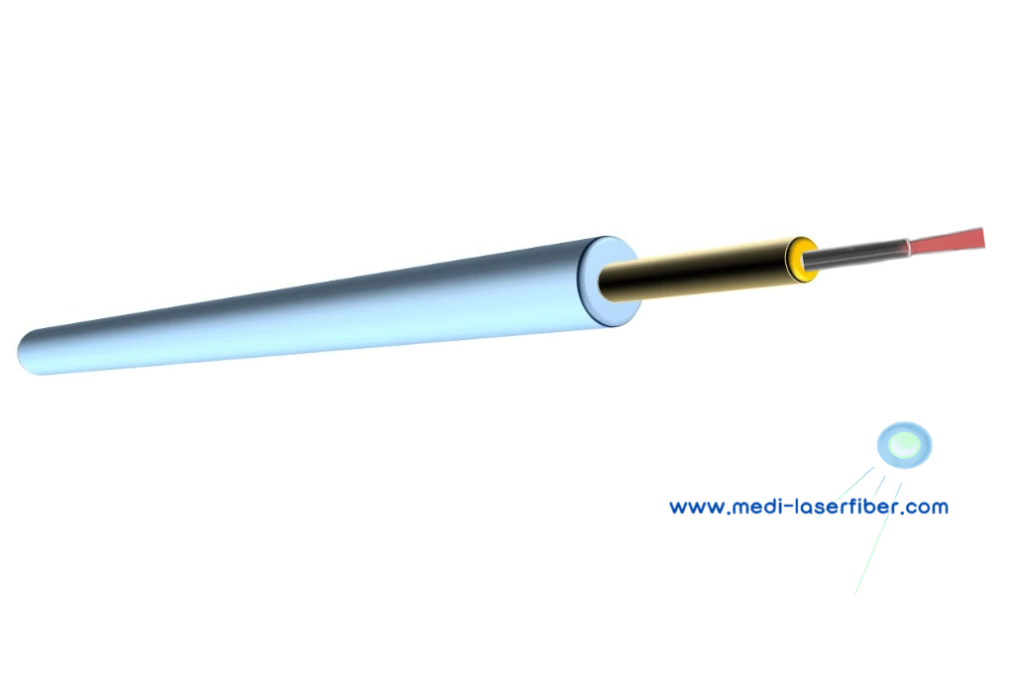When selecting the appropriate medical laser fiber, it is crucial to consider the light beam directions, which involves a comprehensive understanding of several key aspects related to fiber optics and laser delivery systems.
Types
1 Straight Delivery from Tip
Light is emitted directly from the end face of an optical fiber, which is one of the most prevalent light emission methods. In this approach, the laser light is conveyed within the fiber through total internal reflection until it reaches the end, and then it is emitted either vertically or nearly vertically from the end face.
These fibers are highly beneficial for applications that require the laser to strike a target perpendicularly or at a specific, known angle.
If it’s reusable type, suggest to choose a suitable clever tool to clever and cut the end fiber.
2. Side-Firing Fibers
Light is emitted from the side of an optical fiber by incorporating a specialized structure or a reflective device on the fiber’s lateral surface.
These side-firing fibers are designed to emit light laterally. They are frequently utilized in specific surgical procedures, such as prostate surgery. In such cases, the lateral emission of the laser beam enables precise targeting of the prostate tissue while minimizing the risk of damaging the surrounding healthy tissues.
3 Diffusing Fibers
The light exit end of the optical fiber undergoes a special treatment process. This treatment causes the light to scatter as it exits the fiber, resulting in a light distribution within a specific angular range.
In certain surgical procedures where the precision requirements are relatively lower, but a large area needs to be covered.
4 Radial Fibers
Through the use of glass tip design, light is distributed in a circular pattern around the exit end of the fiber. The ring-shaped emission of laser energy ensures that the energy is evenly distributed across a ring-shaped area. This allows the laser energy to act more uniformly around the diseased tissue, effectively reducing the potential for excessive damage to the central region.One ring radial fiber is used most widely.
The manner in which the fiber emits light and the selection of fiber quality have a significant impact on the precision and effectiveness of laser surgery. It influences various factors, including the distribution of laser energy, the size and shape of the laser spot, as well as the depth and extent of the treatment area.
